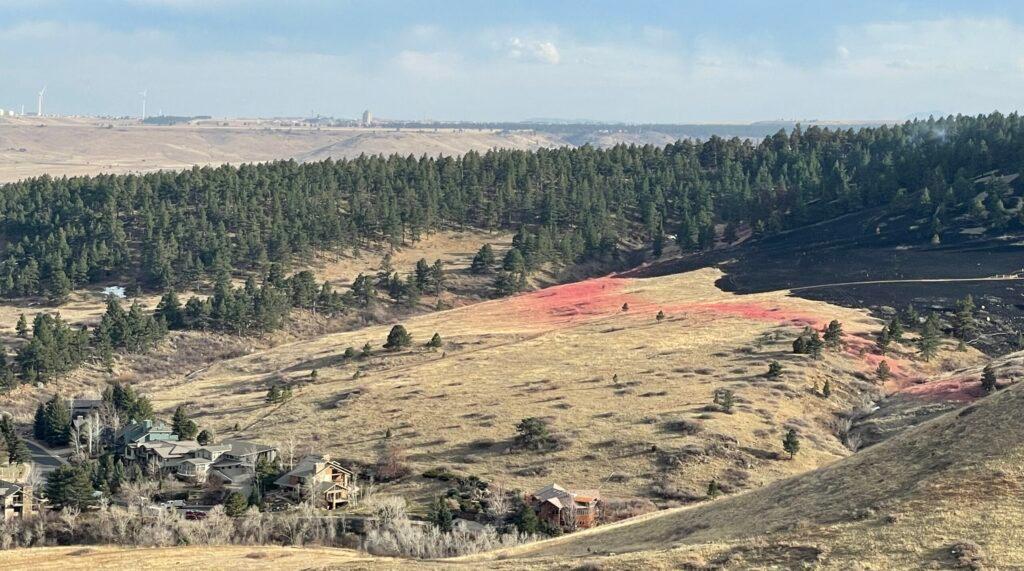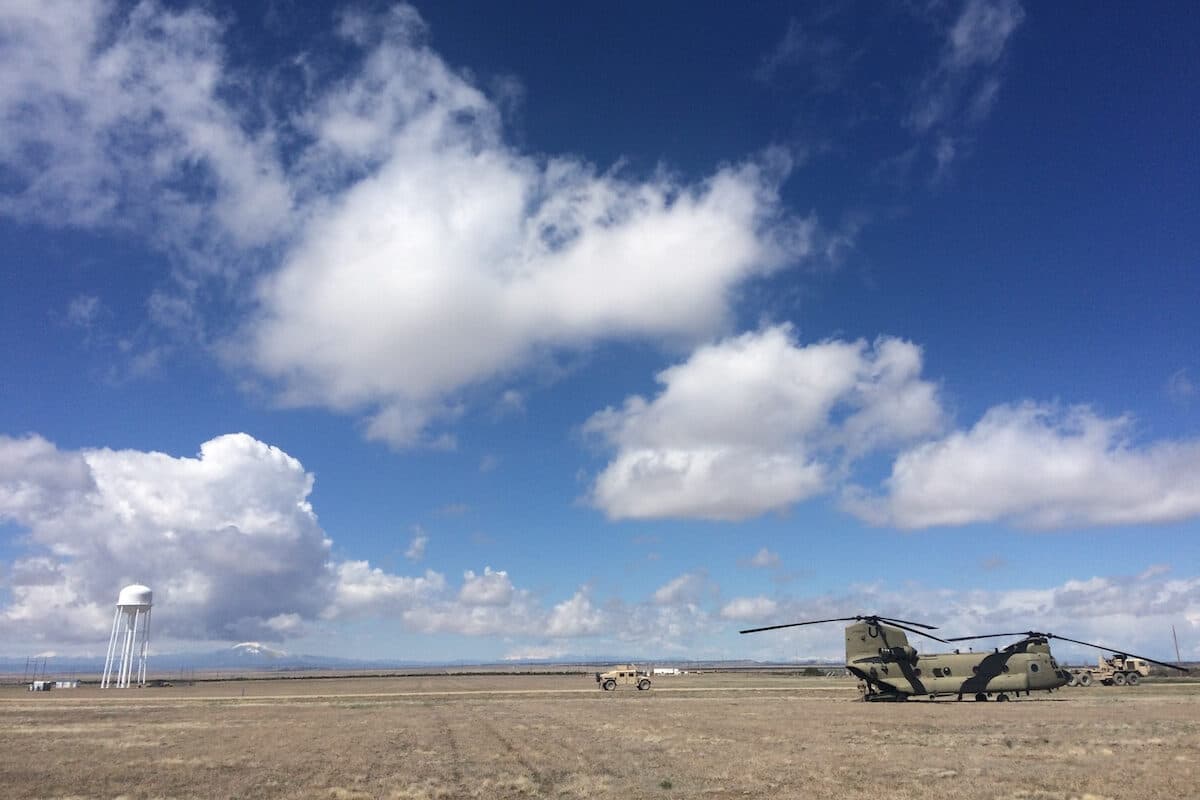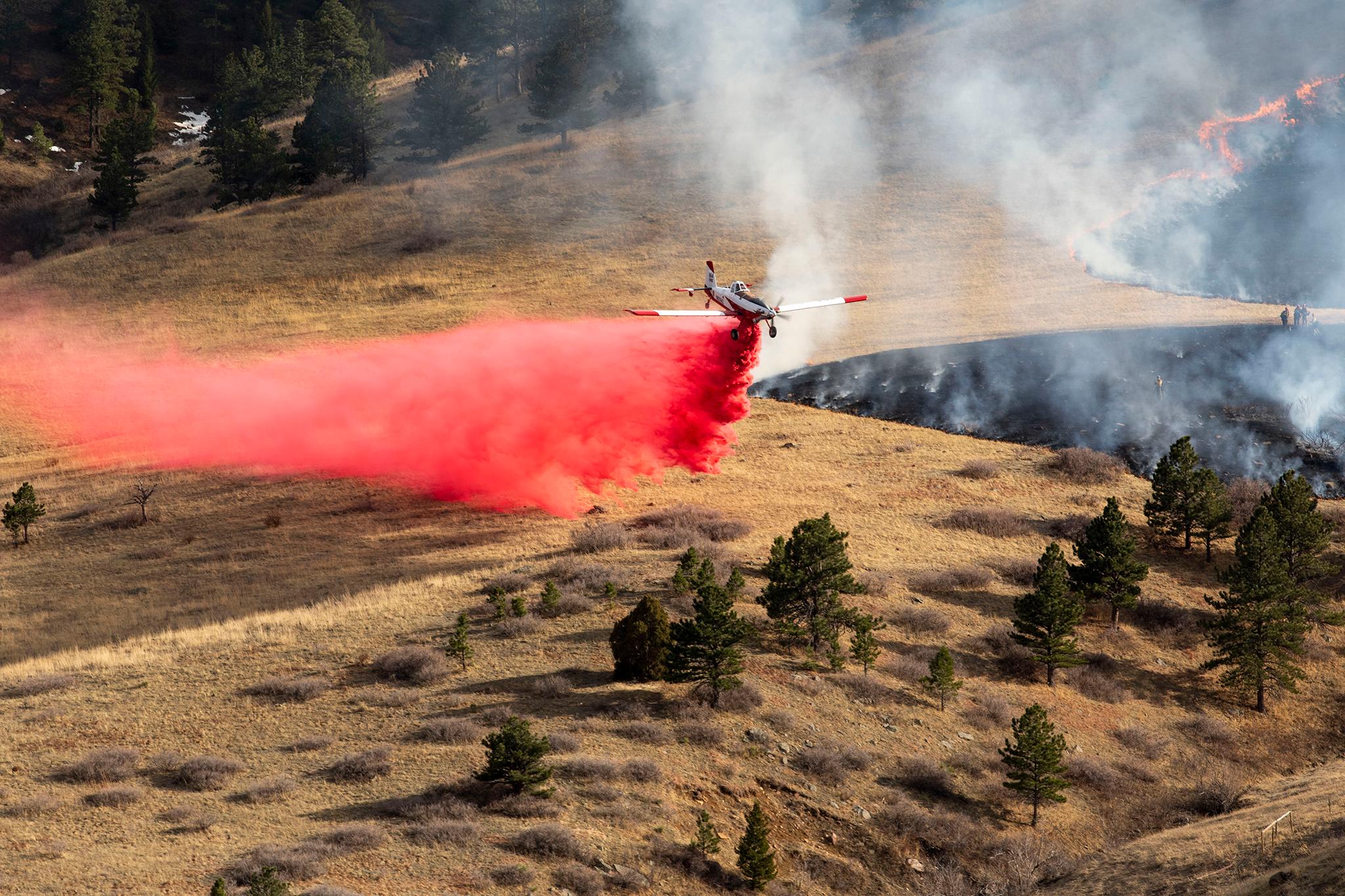
Updated 7:09 p.m. Sunday
The NCAR fire, near Boulder, is 35 percent contained as of Sunday afternoon and all evacuation orders have been lifted. The fire has burned more than 189 acres since Saturday afternoon.
On Sunday, more than 150 firefighters worked to push the fire towards the rocks and snow. Officials feel confident the fire is contained on the southern and eastern boundaries — which are nearest to homes and neighborhoods.
"Right now we are in a good position, the wind speeds are nothing like they were during Marshall," Mike Smith, Incident Commander for Boulder Fire Rescue, said at a press conference Sunday morning when crews were at 21 percent containment. "We have a lot of good resources in place. As long as the weather does what it's supposed to do today and tomorrow, we are in good shape. There's no guarantees for any of this."
By Sunday afternoon, much of the fire had been pushed to "Billy goat country" and forward progress had been stopped, according to Smith.
There are no reported injuries, missing people or damaged structures. Officials do not yet know the cause of the fire and the Boulder Sheriff's Office is investigating.
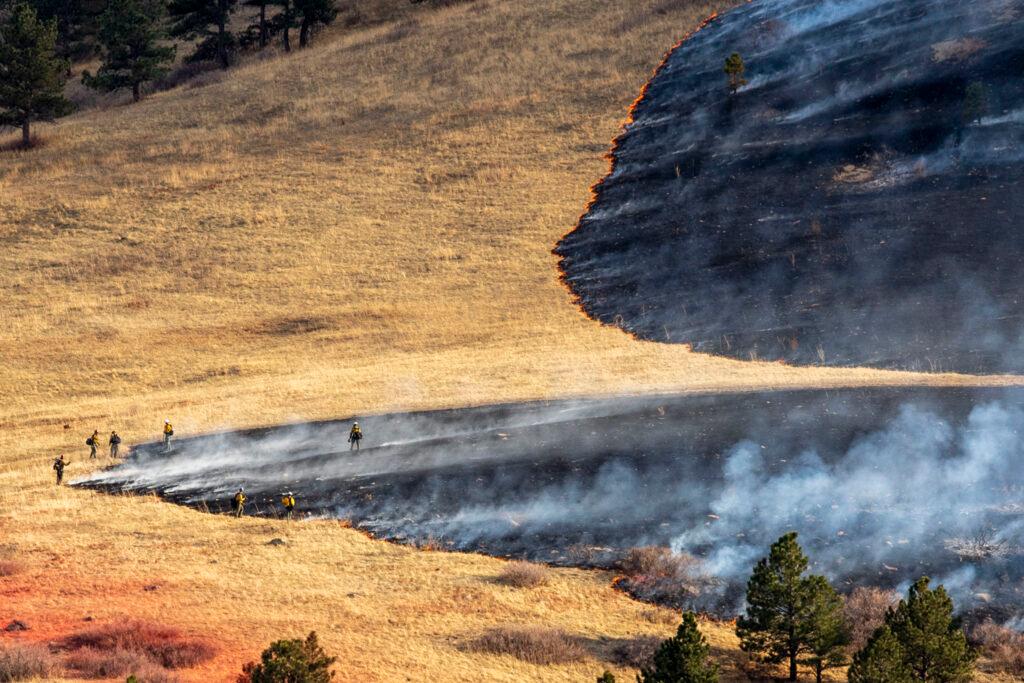
According to Smith, the fire came within 1,000 yards of homes on the edge of Boulder on Saturday, but firefighters were able to keep the blaze at bay thanks to fire repellant dropped from a small airtanker.
Smith said light wind speeds on Saturday allowed crews to fly the fixed-wing airtanker to fight the fire by dropping repellant from the sky, setting up a line of red repellant between the black burned earth of the fire and homes just down the slope. On Sunday, two airtankers were available but a helicopter was used instead as a more strategic way to put out hotspots.
During the Marshall fire, 100 mph winds grounded most aircraft and prevented firefighters from flying that day — depriving them of a crucial tool for fighting wildfires.
"These are two different animals," Smith said, when comparing NCAR to the Marshall fire. "It's a little bit of apples and oranges just because of the wind speed and the location."
"One of the things that we learned from the Marshall fire was how to rapidly escalate and integrate multiple agencies and get them to work together," Smith said when asked what improvements have been made since the Marshall fire that devastated Boulder County only three months ago. "We continue to learn from every one of these fires."
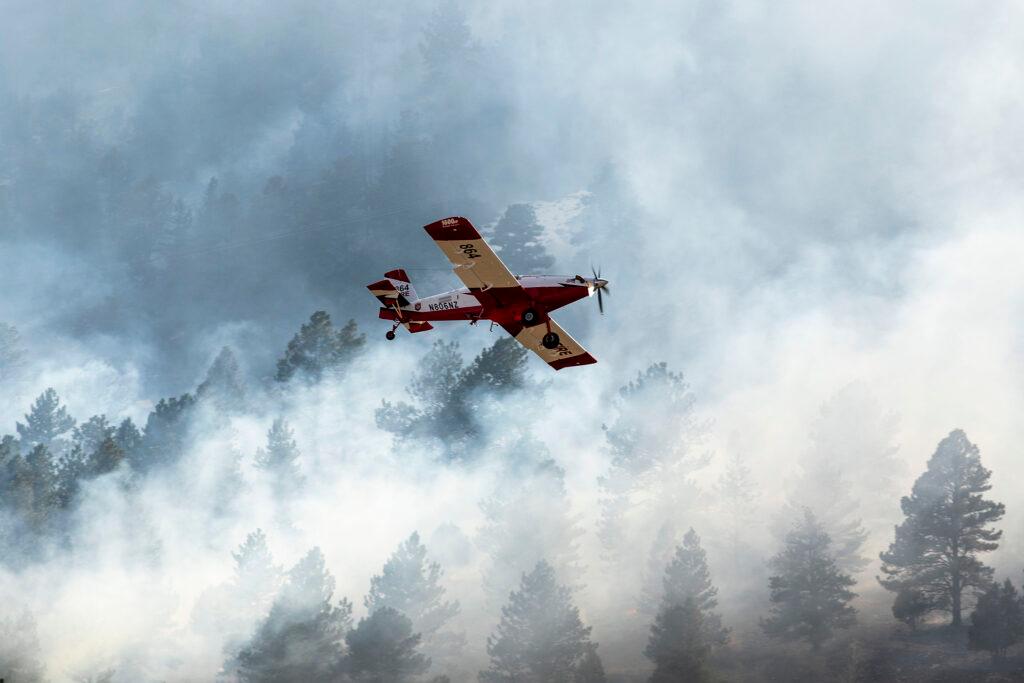
More than 1,000 homes and buildings burned in the Marshall fire, which occurred on December 30th of last year, far outside of the traditional fire season. Smith expressed concern about the rest of 2022 after having worked a incident commander for two major winter fires already.
“We only have 365 fire days a year,” Smith said. “It's March and it feels like it’s November. We are nervous about the season coming up. When you look at the long-term forecast for the upcoming season, I think this is just a sign of the way things are going to go.”
Officials dramatically decreased the evacuation zone at around 11p.m. Saturday night, hoping to allow as many people as possible to safely spend the night at home. Nearly 700 homes were still under evacuation as of Sunday, about 1,629 people according to the Boulder Office of Emergency Management. And hiking trails remained closed.
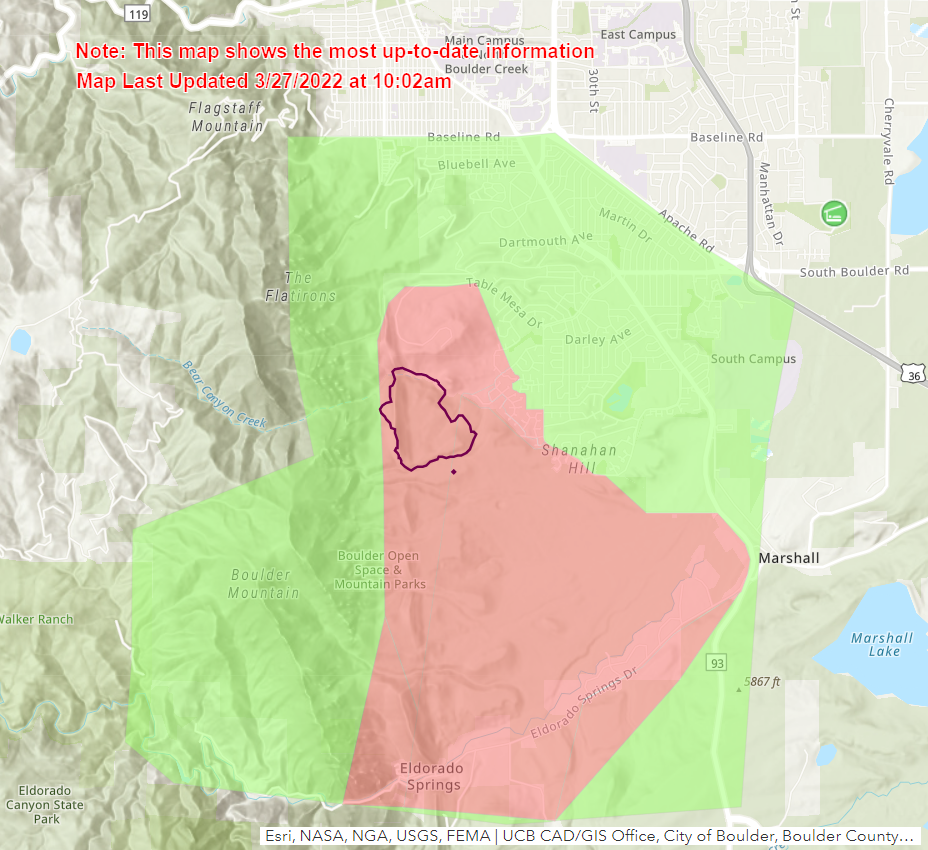
Smith said overnight temperatures and moisture helped give crews an upper hand. However, Sunday’s forecast called for wind gusts of 20 mph and more dry conditions. Smith expressed gratitude when that forecast did not come to pass, and instead Sunday saw mild winds and colder temperatures.
Smith noted a positive takeaway from NCAR fire was a burning off of the understory — the brush and pine debris on the forest floor that can often act as kindling and cause larger, hotter flames — which could help prevent more damaging fires in the future.
"I don't want to say that any wildfire is good, but there are upsides to this," Smith said, whose job at the Boulder City Fire Department includes conducting prescribed burns.
“Anytime we have fire on the landscape and we don’t lose structures and we have no injuries or life lost, we can see that there is an upside to it. We never like to see this in an emergency situation. We’d much rather plan this and go through the process. But there will be some benefits for this going forward.”
Our original story from when the fire began Saturday.
Unseasonably warm and dry weather along the Front Range Saturday helped spark a Boulder wildfire that broke out just northwest of where the devastating Marshall Fire burned in December.
The fire of undetermined origin near Table Mesa began around 2 p.m. Saturday. Boulder authorities sought help from multiple departments to supply brush trucks and wildland fire crews. They also requested precautionary evacuations of about 1,200 people from nearby neighborhoods. By night's end, that evacuation order had grown to include 19,000 people in 8,000 homes, stretching to an area south of the origin point of the Marshall Fire. An updated map is available on the website of the Boulder Office of Emergency Management.
By 7 p.m. the fire had grown to 122 acres, and firefighters had no containment. But winds had slackened, providing hope that nearby homes could be protected, said Marya Washburn, public information officer for Boulder Fire and Rescue.
"The wind is now dying down, so we're expecting to have the weather work more in our favor," Washburn said. "When the fire started we had fairly high winds."
Winds near the Mesa Laboratory of the National Center for Atmospheric Research where the fire began were gusting to 35 mph. NCAR soon became the staging area for more than 50 firefighters and equipment.
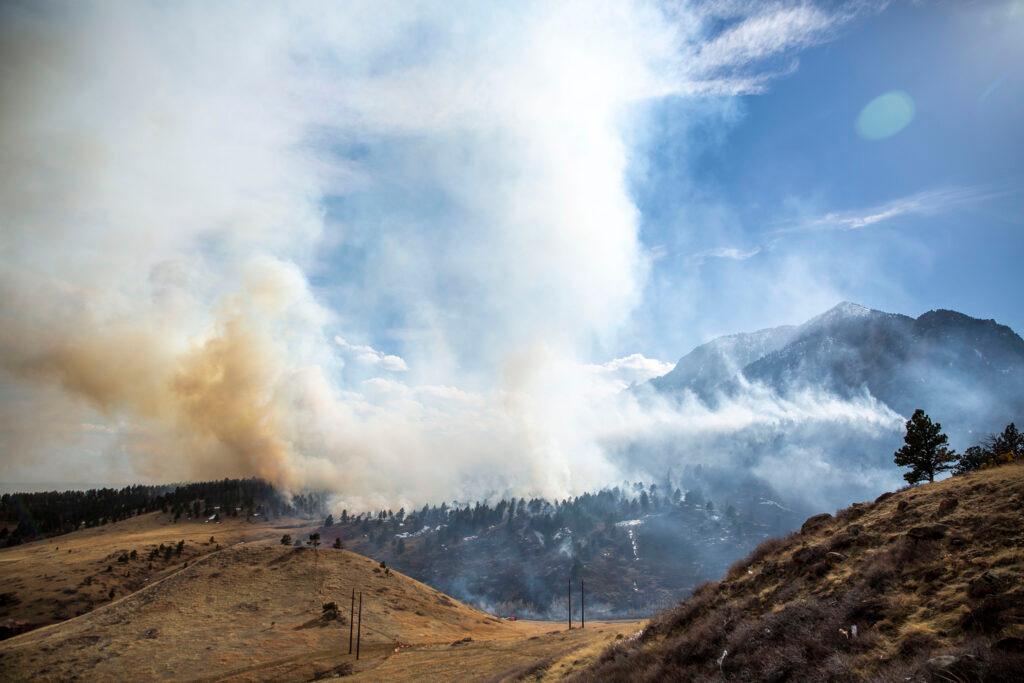
Airplanes dropped slurry on the fire, while a "wet line" of water was set by firefighters between the burning brush and structures.
"We're doing everything we can to keep structures safe and protect as much as we can," Washburn said.
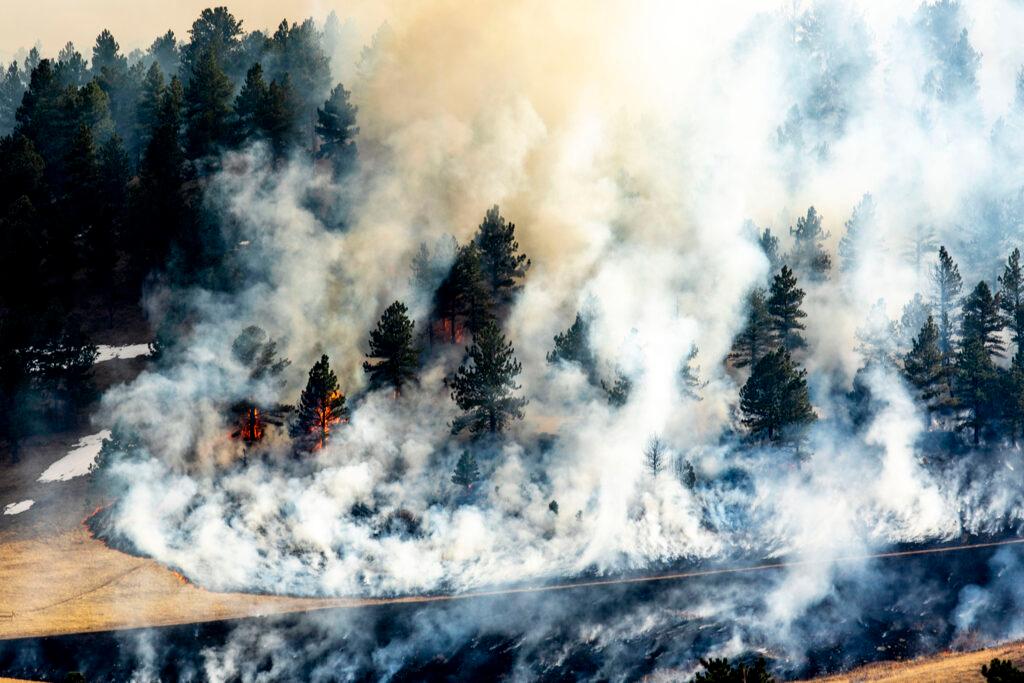
Residents were evacuated from neighborhoods in Table Mesa on the east side of south Boulder, and El Dorado Canyon. The East Boulder Community Center was opened as a shelter.
Brian Oliver, the wildland fire division chief for the Boulder Fire and Rescue, and one of the incident commanders on the NCAR fire, said firefighters would work overnight just to stop the forward progress of the fire, protect any structures and get a containment line in place.
"Crews made excellent progress just keeping it out of the subdivision," Oliver said.
He credited fire mitigation efforts including thinning of vegetation by Boulder open space workers for keeping the fire in check, but said the fire took off because trees in the area remain dry and dormant and the grass is still brown from winter.
As if on cue, the fire burst to life Saturday just after morning warnings from the National Weather Service that the sudden onset of warm weather and strong winds would produce fire-friendly conditions.
“Even with just elevated fire conditions, it’s definitely advisable to avoid certain activities that could cause sparks,” said Bruno Rodriguez, a forecaster with the National Weather Service in Boulder. “Avoiding lawnmowers, chain saws things like that.”
The Marshall Fire started on Dec. 30 in nearly 100-mph winds, ripping across open space and destroying more than 1,000 homes and businesses in Superior and Louisville. The debris has yet to be cleared from that blaze, adding to the anxiety of Boulder residents as smoke was spotted near the Flatirons.
The immediate concern of first responders Saturday was clearing a crowded El Dorado State Park and the numerous trails around the Flatirons, filled with hikers taking advantage of the weather.
Graduate student Ben Holden of Superior was among what he described as "hundreds" of hikers on the Mallory Cave Trail near the fire's ignition point.
"You could see the fire spreading as we were coming down," Holden said. "Very scary."
As he was nearing the end of the trail, firefighters and rangers were already on scene and heading up to direct other hikers to safety, Holden said.
"They were in the process of getting people out."
By 5:30 p.m., the smoke, which had been racing parallel to the ground in earlier high winds, was starting to filter up toward the sky, a sign that the driving wind was was beginning to slow. Gov. Jared Polis issued a statement saying state officials were monitoring the fire and helping with resources.
“We are thankful for the swift action and response to this wildfire by our firefighters and first responders," Polis said. "State officials have spoken with (Boulder County Sheriff Joe Pelle) this afternoon and the state has deployed two firefighting aircraft, including a single-engineer tanker and type 2 helicopter, and stands ready to assist with the response. We will continue to monitor this evolving situation.”
CPR's Ryan Warner contributed to this report.
